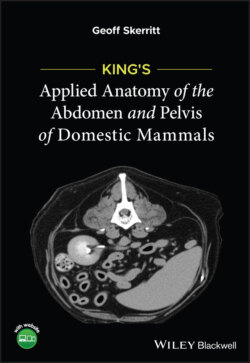Читать книгу King's Applied Anatomy of the Abdomen and Pelvis of Domestic Mammals - Geoff Skerritt - Страница 39
2.2.3 Chemical treatment of food
ОглавлениеWater, salts and vitamins can be absorbed directly by the appropriate lining cells of the intestines, whereas enzymes and certain other substances are needed for the prior breakdown of proteins, carbohydrates and fats. These enzymes are produced and secreted by cells within the digestive tract, that is, by cells lining the stomach and intestines, and by glands external to the digestive tract. The latter comprise the salivary glands, liver and pancreas, which are derived embryologically from the developing digestive tract and are important sources not only of enzymes but also of other substances such as bile salts that are involved in the emulsification of fats. The production of enzymes to facilitate the breakdown of food in the digestive tract represents a marked degree of specialisation on the part of the cells concerned, since the enzymes are produced in large quantities and are then secreted to act beyond the confines of the producer cells. All body cells produce a variety of enzymes, but in general these act intracellularly.
An important additional facility to the above general mammalian pattern occurs in herbivores, where special provision is made for the breakdown of cellulose by bacterial fermentation, and in these species one portion of the digestive tract has structural modifications for this purpose; these modifications include the additional compartments of the stomach of the ruminant and the greatly enlarged caecum and colon of the horse.
